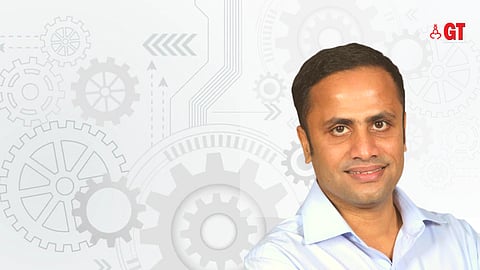

Science is the logical, systematic hypotheses of facts and principals playing specific functions to enhance the quality of our society and daily lives, and addresses global social needs. Until the late 19th century, scientists were still referred to as ‘natural philosophers’ or ‘men of science’.
Over the centuries, gigantic steps have been made in the field of Biology, Mathematics, Quantum Theory, Medicine, Electrochemistry, Astrology, Oceanography, Computers, Travel, Satellites, Plastic Surgery, Cell Phones, to name just a few. And, the 21st century, sees advanced research in Artificial Intelligence, Virtual Intelligence and humanoid robots.
Among the scientists who figured in Stanford University's global rankings for the year 2021 is Dr Michael Sony, who has a PhD in Management Studies and ME in Industrial Engineering. He also happens to be from Goa.
FROM GOA TO NAMIBIA
Dr Michael Sony, from Ribandar, was born in Goa and did his schooling in a local school, Sarvajanik High School, Carambolim, North Goa. Later, he completed his ME in Industrial Engineering (Goa University, 2009), and that was followed by a PhD in Management Studies (2016), after which he worked as a Junior Engineer in the Electricity Department in Goa for 18 years.
In 2017, he got an opportunity to work as a researcher and faculty in Industrial Engineering (Department of Mechanical and Marine Engineering) at Namibia University of Science and Technology (NUST), Windhoek, Namibia.
“The motivation to come (to Namibia) was on a personal front. I stammered, and teaching was always a challenge I wanted to overcome. When I got an opportunity at NUST (ranked 27th in Africa), to do a full-time research program, with funding available to carry out research on Industry 4.0 (a field with few people working in that area, and which was just taking off in 2017), was a huge dose of motivation to give wings to my dream.”
Supported by the Dean and HoD at NUST, he could carry out his first research in the field, designing architecture for the implementation of Industry 4.0. After studying for two years, he wrote his first research paper on how Industry 4.0 can be assessed by organizations and how it should be implemented as a socio-technical system, and how Indian manufacturing industries and developing countries can harness its potential.
GAINING RECOGNITION
As a Senior Lecturer/Program Director for PDM Digital Business, Wits Business School, South Africa, Dr Sony has been featured among the 2% highly cited scientists in the Stanford University Ranking (for the year 2021) for his research, and the impact on the academic community. The citation is an important metric in research as it counts the number of times a fellow researcher in the same research area cites their work.
“My research was well cited and there were other criteria that the agencies used in order to include me in the list. Industry 4.0 marks not only a technical phenomenon, but also a new socio-technical paradigm and has expanded its domain from theoretical concepts to real-world applications. However, it’s still not clear how to incorporate Industry 4.0 technologies in various organisations and sectors to gain a competitive advantage,” says he.
The World Economic Forum report states that only a few organisations have gone past the pilot purgatory phase in the implementation, which goes beyond just digitising certain operations. It calls for dynamic digital integration of the organisation within the value chains or supplier networks, conceptualising integration across stages of the product life cycle, leading to new business models, for product servitization.
“I always stress that Industry 4.0 will help in right-sizing the organisation. In my research, I’ve looked at it from a socio-technical system’s perspective. Once you look at the holistic implementation, the failure rate gets minimised. I have developed a framework architecture to implement the same. However, not all technologies will help an organisation equally; thus we work on creating models of acceptance for organisations, but there is still a lot of research to be done in this area,” adds Sony.
He has published 80 international research papers in the field of Industry 4.0, Quality 4.0, Production and Operations Management, Lean, Six Sigma and Operational excellence.
ADVICE TO YOUTH
“There are many advantages, for the youth, in being a scientist. Academically, one needs to have a PhD or master’s degree with research experience. It’s intellectually stimulating and a cognitively engaging element of satisfaction. You set your own targets, daily challenges and self-motivation to reach the targets, attaining a sense of satisfaction in the continuous learning experience. The results are exceptionally interesting, interpretation is more fun. Having a good research network helps.
The disadvantages are long physically demanding hours, missing out on social life and lack of clarity. Also, at times, software or instruments are needed for collaboration works; but many agencies fund good proposals,” he explains.
Would Dr Sony consider returning to work in Goa or India? “I have collaborated with researchers around the world, on all six continents including Indian researchers. Coming to Goa is a great experience. I feel blissful when the plane touches down, but, return with a heavy heart. My dream is, when I’m old, to live in Ribandar, sit on the culvert in Sao Pedro and fish! My present 100-year-old institution ranks among the top 400 in the world in Qs Quant (Nelson Mandela studied here). Besides, it’s like a second home, I’ve got colleagues who are there for me through thick and thin, and the freedom to do research and teach in the area I choose, which gives utmost satisfaction!” he concludes.
Dr Sony’s research publications:
https://scholar.google.com/citations?user=jB0Zp3kAAAAJ&hl=en&oi=ao